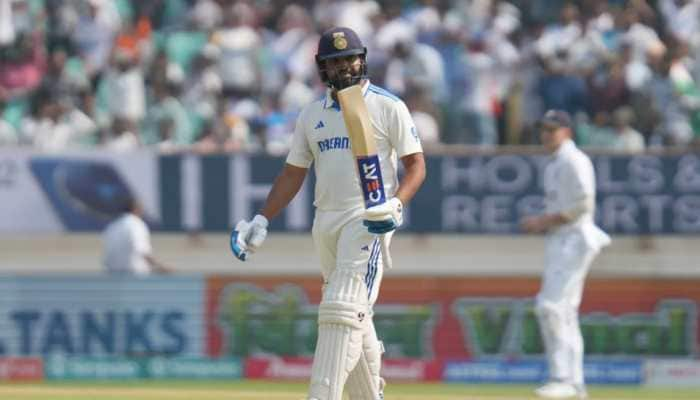WTC Final: Hanuma Vihari highlights the BIGGEST challenge for India on England tour
Having last played in the Sydney Test before his county stint, Hanuma Vihari believes the Dukes unlike the Kookaburra ball (in Australia) has something to offer to the bowlers throughout the day.
- Vihari once again reiterated that the biggest challenge of batting in England is facing the Dukes as it keeps bowlers in the game at all times.
- He faced close to three overs from Stuart Broad and was dismissed for a 23-ball duck.
- Taking guard is an important factor for any batsman and Vihari too decides on marking his guard depending on where he is playing.
Trending Photos
) Indian batsman Hanuma Vihari had a short stint with Warwickshire this year. (Photo: Reuters)
Indian batsman Hanuma Vihari had a short stint with Warwickshire this year. (Photo: Reuters) Playing for Warwickshire in April, India middle-order batsman Hanuma Vihari didn’t really score too many runs. But the experience of playing against the Dukes ball in English conditions will definitely stand him in good stead during the upcoming World Test Championship (WTC) Final against New Zealand and the five-match Test series against England.
Having last played in the Sydney Test before his county stint, Vihari believes the Dukes unlike the Kookaburra ball (in Australia) has something to offer to the bowlers throughout the day. “The Kookaburra gets soft in Australia after a while. But the Dukes does something all day – off the wicket or in the air. There’s always something for the bowlers and that is the key challenge. When I came to England in April, it was quite cold. Even if you believe you are set, you can still be surprised by the movement. Like when I got out in my 30s against Essex, where I thought the wicket was quite good to bat on, but the odd ball was doing something because of the hard seam on the Dukes,” he told ESPNcricinfo.
On his Test debut at The Oval in 2018, India skipper Virat Kohli had given him tips on facing the likes of Stuart Broad and James Anderson. Vihari says while they were invaluable at that point, his trigger movement has changed over time.
“At that point my trigger movements were different compared to now. I was young and playing my first game. I was moving more than I would have liked to at that point. My trigger movements were so far across that what he said helped me deal with the straight delivery better. Those cues helped and I ended up scoring runs and batting comfortably. But now I feel I am setting up to face the outswinger and inswinger decently. Now my game is much more in control. I know what my trigger movements are,” he said.
Taking guard is an important factor for any batsman and Vihari too decides on marking his guard depending on where he is playing. “Yes, it depends on where we are playing. In Australia it was more towards leg stump because there is no lateral movement there, so you can play beside the line of the ball. Here, in England, you have to get more in line and judge the off stump more because of the movement of the ball. I start on the middle stump and because I do the trigger (back and across), I end up between off and middle. At the same time, you have to remember that if it is a stump-line ball, you have to play straight,” he pointed out.
Vihari once again reiterated that the biggest challenge of batting in England is facing the Dukes as it keeps bowlers in the game at all times. “Definitely, that’s the challenge here. The overhead conditions play a part as well because when it is sunny, it gets a bit easier to bat, but when it is overcast, the ball moves all day. That was the challenge I faced early on in this season of county cricket – because it was quite cold and the ball was doing a lot off the wicket,” he said.
He faced close to three overs from Stuart Broad and was dismissed for a 23-ball duck. Asked about how the pacer got the better of him, Vihari said: “I thought it was full enough for me to drive, but again, in England you have to be really certain with your shot selection. In India, you can get away with a push, or even if it is not there to drive, you can still get away driving on the up. If I were to play that ball a second time, I would try to play as late possible.
“Having said that, it was just my first innings in county cricket. I learned that I should play much later. In the second match, against Essex, I got 30 and 50. Essex are the defending champions and have a decent bowling attack with Peter Siddle and Simon Harmer. I thought I batted well, but I should have converted it into a bigger score.”
(with ANI inputs)
Stay informed on all the latest news, real-time breaking news updates, and follow all the important headlines in india news and world News on Zee News.
Live Tv







)
)
)
)
)
)
)
)
)
)
